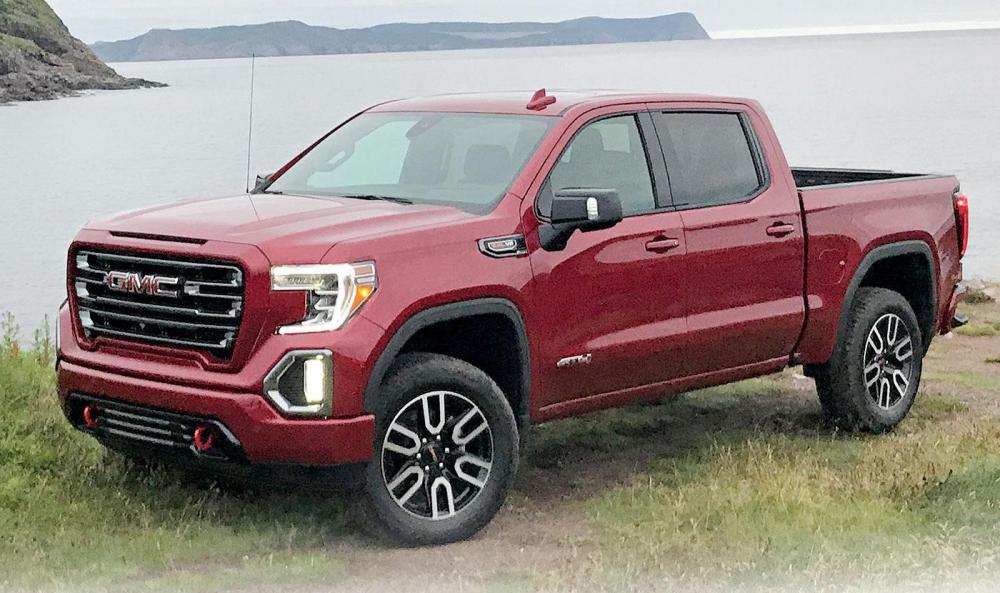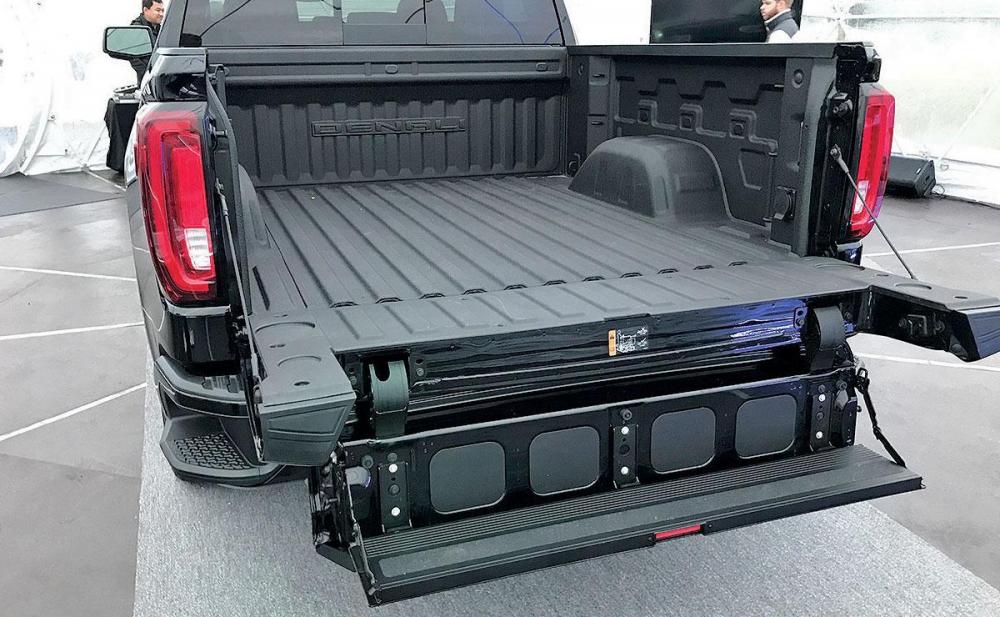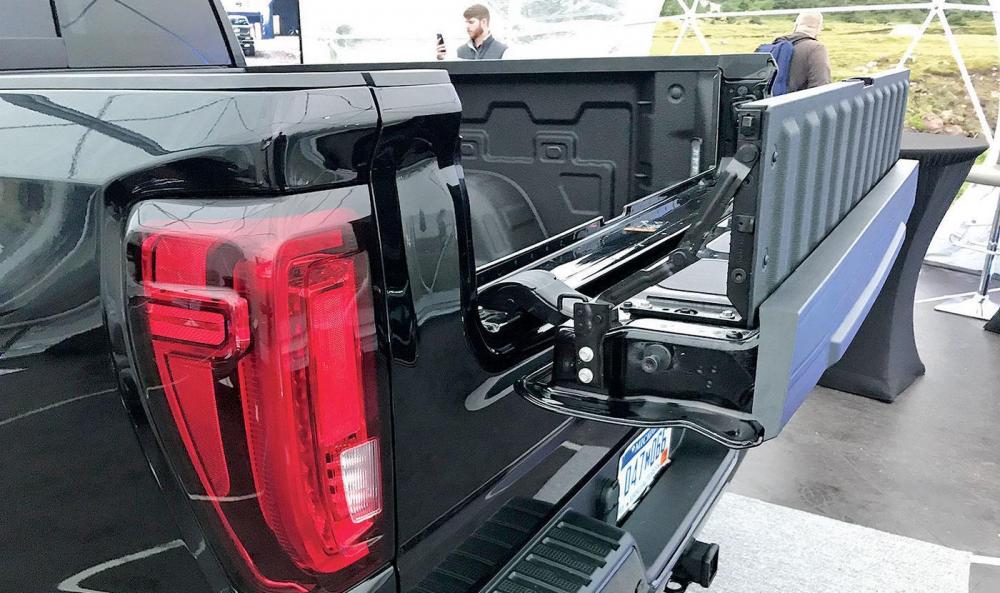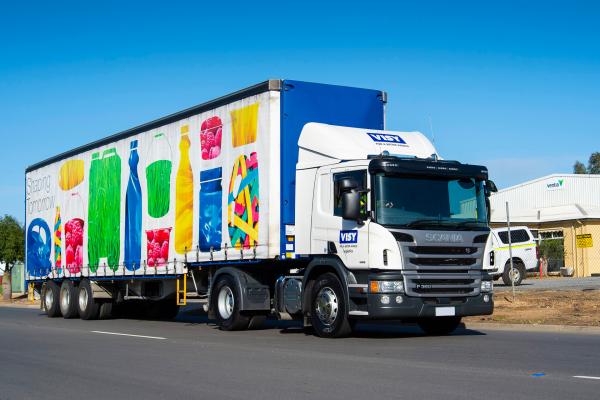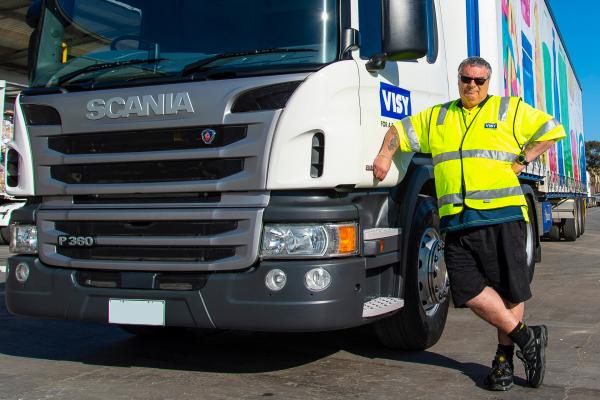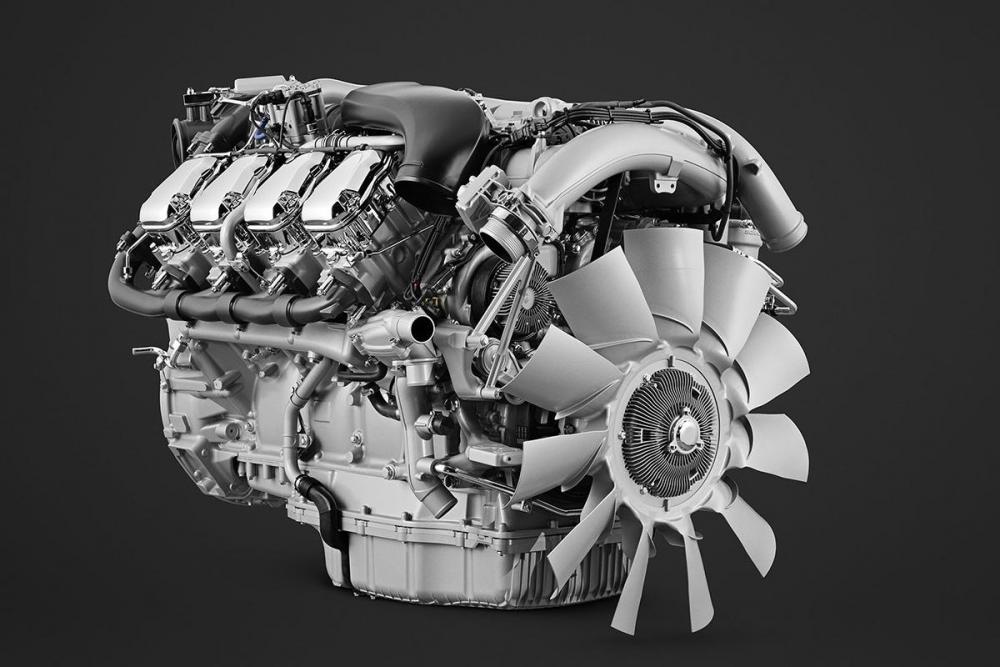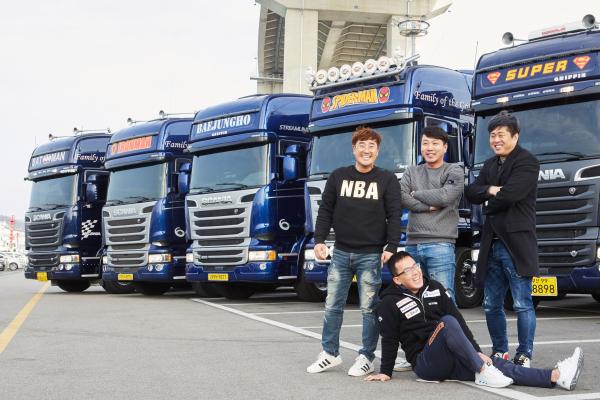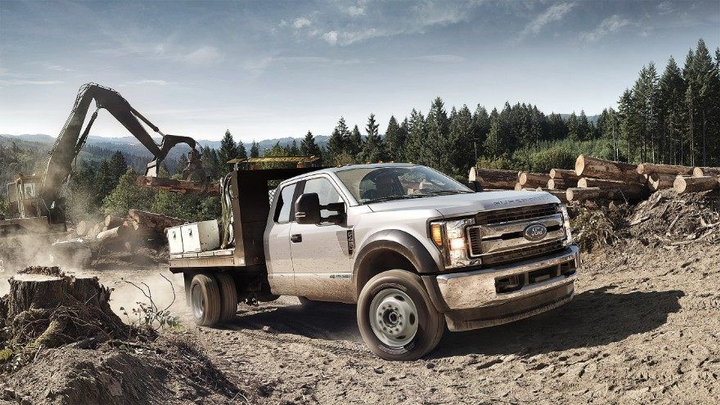
kscarbel2
Moderator-
Posts
18,550 -
Joined
-
Days Won
112
Content Type
Profiles
Forums
Gallery
Events
Blogs
BMT Wiki
Collections
Store
Everything posted by kscarbel2
-
Why don't you call one of the many Timbren distributors near you? http://timbren.com/locate-dealer/ http://timbren.com/timbren-ses-the-hd-truck-suspension-solution/ .
-
GMC Sierra diverges from Silverado with unique box, tailgate Michael Wayland, Automotive News / August 26, 2018 ST. JOHN'S, Newfoundland — General Motors is delivering on its promise to better distinguish the GMC Sierra from its sibling, the Chevrolet Silverado, offering technology and amenities that go well beyond the usual cosmetic differences. In the past, GM set the two full-size pickups apart mostly through styling and pricing. But that's changing for the redesigned 2019 versions, which are arriving in dealerships nationwide. Sierra-exclusive features include a six-way tailgate, next-generation video rearview mirror, large multicolor 3-by-7-inch head-up display and adaptive ride control with active dampers that adjust every 2 milliseconds based on sensor feedback to keep the truck and whatever it's carrying steady. GMC also will offer an industry-first composite box — scheduled to start production in April — that GM calls the CarbonPro. It replaces the standard steel inner panels and floor with a lightweight carbon fiber composite that is 62 pounds lighter. "Some say that the meek will inherit the earth," said Tim Herrick, executive chief engineer of GM's full-size trucks. "I'm betting on carbon fiber boxes and cockroaches. It's just unprecedented strength." 'It seems so simple' The most notable Sierra-exclusive feature is the six-way tailgate that will be standard on the SLT, AT4 and Denali models. It will be the focus of the initial marketing effort early next year, Phil Brook, GMC vice president of marketing, said last week at a media event here. The tailgate's multiple positions allow it to be used as a standing workstation, a step for climbing into and out of the bed or as a seat. An inner tailgate, part of the primary one, can fold down for easier loading or be used as a step, among other uses. The inner gate is also part of a load-stop feature to help keep cargo in place when the main tailgate is down, and can be used as an exterior table when the main gate is up. "It's a complicated solution that was very difficult to engineer, but it seems so simple," said Matthew Noone, GMC director of exterior design, who held unofficial customer clinics of the tailgate by leaving it open at retail locations such as dealerships and Home Depot stores to gauge responses. The new tailgate has been more than three years in the making, and GMC officials are continuing to find new use cases for it as the pickups arrive in U.S. showrooms, including the addition of lights and speaker accessories that dealers will install. "We're going to sell trucks just because of this gate," Noone said. Prices for the redesigned Sierra, like its Silverado sibling, decreased on some lower trims, while rising on the higher models because of additional standard features. Trim levels Trims for the 2019 Sierra models are base, SLE, Elevation, SLT, AT4 and Denali. Starting prices range from $31,095 for an entry-level regular cab truck with a long box to $56,195 for a crew cab Denali model with a short box. All prices include shipping. Starting prices on SLE crew cab models decreased as much as $1,300 compared with 2018 models, while base SLT prices — more than 40 percent of current sales — rose $1,500 to $45,795 for a double cab model with a standard box. Starting prices for Denali, based on configuration, increased as much as $2,000. Prices for the new trims for 2019 start at $41,795 for Elevation and $52,295 for AT4. Brook said GMC expects AT4 off-road models to grow to 10 percent or more of Sierra sales. He said, "We see a spot in the market that no one's doing, and that's premium off-road." .
-
In 1969, the END865/866 and Scania DS14 shared the same engine block. Scania used individual heads though. Fast forward to today, the Scania variant has been continuously evolved forward so it is a very modern engine. It is now 16.4 litres and features a Compacted Graphite Iron (CHI) block.
-
Timber Trucking in the Black Forest with the Scania V8
kscarbel2 replied to kscarbel2's topic in Trucking News
-
Scania Group Press Release / August 23, 2018 Scania driver scores 100 percent on Driver Support system – every day. Tim Mason, a driver for haulier Visy Logistics, is one of Australia’s best and safest drivers, and that’s no idle boast. Mason, who drives a Scania P 360, has been clocking up 100 percent scores on the Scania Driver Support system on such a regular basis that anything less is a surprise. “I’m never below 99 percent,” he says with quiet pride. His achievement is remarkable – most drivers average scores of 70 to 75 percent – but Mason can call upon 40 years as a professional driver, mainly in the United Kingdom. He started with Visy soon after he moved to Australia ten years ago. “Anticipation is the key” Visy Logistics ordered 59 new Scania trucks in 2017 for its operations across Australia, attracted by positives such as the fuel economy (with low emissions), Scania Driver Support and Scania Fleet Management systems. Mason’s new Scania P 360 is a 4×2 tractor unit pulling a trailer full of palletised aluminium beer cans. He makes four or five deliveries a day from the Visy Logistics recycling plant to a brewery in Adelaide. But the job never becomes tedious, especially now he has his perfect driving score to preserve. “Anticipation is the key,” he says. “You need to read the road. I was taught that driving consists of three parts: seeing, planning and action. If you get your anticipation right, everything else falls into place, and you shouldn’t need to use the service brakes, just the retarder.” Scania’s safety strengths Mason started off driving Japanese and American trucks for Visy, “But the Scania has Opticruise gearchanging and the retarder and one of the benefits is that at the end of the day you do feel fresher. You can’t help feeling an aching for a Scania. I know lots of guys here in Australia that drive American trucks. Once they’ve tried my Scania, they’re converted.” Mason praises the P 360’s comfort and quiet inside the cab, but he highlights the safety features such as the visibility. “If you can see where you are and where the traffic is, you’re going to be safer,” he says. The Scania Driver Support system helps too. “If you’re not paying attention and have to brake sharply, the system prompts you to anticipate better next time. This has a big impact on the driver score, so you have to work hard to regain the percentage. To get a good score you must pay attention all the time.” .
-
Volkswagen Group owned MAN Trucks exits Indian market
kscarbel2 replied to kscarbel2's topic in Trucking News
MAN Truck & Bus preparing for the future of the commercial vehicle industry MAN Truck & Bus Release / August 23, 2018 Efficiency measures rolled out across the entire company // Review of product portfolio results in discontinuation of the MAN CLA Electromobility, automated driving, digitization – the commercial vehicle industry is changing at a tremendous speed. Highlights from these sectors will be presented by MAN Truck & Bus at the IAA Commercial Vehicles 2018 taking place in September. In order to realize the high investments associated with this technology, MAN Truck & Bus is continuing to systematically implement its efficiency efforts. Joachim Drees, Chief Executive Officer of MAN SE and MAN Truck & Bus, says: "Our corporate strategy Future Lion is intended to provide MAN with a clear focus on markets and products. This means that we will be subjecting both our product portfolio and our international market presence to close scrutiny with a view to highlighting customer needs, cutting costs and prioritizing our investments. The path is clear - MAN Truck & Bus must become more profitable in order to continue investing in future topics. Or to put it more simply, we will be concentrating on things that are essential for the future of the company and will also have the courage not to continue certain other things." Against this background, the Executive Board of MAN Truck & Bus AG has decided to streamline the product portfolio by stopping the production and sales of the MAN CLA. This vehicle was a model geared specifically to the market needs of emerging economies, being positioned significantly lower than the TG series and accounted for only a very small share of the company´s truck sales. MAN will discontinue production in Pithampur, India following the completion of existing customer orders. There will be no successor model. MAN is able to meet customer requirements in existing MAN CLA markets with its wide range of modern TG vehicles. MAN Truck & Bus has reached agreement with Force Motors Ltd. regarding sale of the plant in Pithampur. The latter will be acquiring the site and submitting an offer for ongoing employment to the entire workforce. "I am pleased that we have succeeded in finding such a positive solution for all those involved, which guarantees continued employment for our employees," says Jörg Mommertz, Head of MAN Trucks India. The restructuring measures also envisage MAN Trucks India becoming an R&D Centre for Excellence supporting global projects. Further initiatives to enhance efficiency have already been launched by the management at MAN Truck & Bus. These are aimed at providing for higher efficiency across the entire company, prioritizing investments and focusing on marked cost reductions - apart from the production network, this will also apply in the case of sales and development operations, as well as to indirect costs and funds commitment. In this connection, Joachim Drees comments: "We are making MAN fit for the future. The foundation was laid with our PACE2017 program for the future during which many processes were more efficiently structured. We are now building on this by stabilizing what we have already achieved and directing special attention to firmly anchoring the concept of efficiency throughout the company on a long-term basis." -
Volvo Trucks Press Release / August 21, 2018 Volvo Trucks is introducing four new innovative steering features that are designed to put the driver in charge and take safety to the next level. See how the updated Volvo Dynamic Steering is designed to save lives by stopping trucks from drifting into the wrong lane and how the technology can minimise the risk of skidding on low friction roads. Drivers can now also choose to fully customise the responsiveness of the steering on a Volvo truck as well as avoid injuries and delays by controlling their truck from the outside. These are just some of the new features of Volvo Dynamic Steering. .
-
Scania Group Press Release / August 22, 2018 Scania has begun the challenging process of reducing its backlog of truck and industrial and marine engine orders. The backlog was built up after a delivery and order stop caused by a lengthy strike at one of Scania’s main casting suppliers. “This is probably the worst disruption that has hit our company in many decades when it comes to supply disturbances,” says Alexander Vlaskamp, Senior Vice President, Head of Scania Trucks. “I really would like to thank our customers for the great patience and understanding they have been showing during this dire situation. We at Scania are now doing everything in our power to reinstate a normal situation and deliver V8 trucks and engines worldwide as soon as possible.” Scania has now secured a small but steady initial supply of the engine blocks that are the foundation of the V8s built in Södertälje, Sweden. Production disturbances of this magnitude create all kinds of logistical challenges though, and it will take some time for Scania to deal with the backlog. “There will still be uncertainties for some weeks before we have the whole picture and can ramp up our production,” confirms Vlaskamp. “But we are starting now, and will increase gradually with the aim of confirming a correct delivery schedule during the next few months for existing orders. We will successively open up for new orders. This whole situation came at a time when we were extremely busy producing new V8 units and I can only say how sorry we are that this had to happen to Scania’s loyal customers.” The V8 engines for Scania’s new truck generation, and for its industrial and marine applications, are produced in Södertälje. The truck engine range consists of four different versions, with power outputs ranging from 520 hp up 730 hp, and to more than 1,150 hp for marine engines. Scania’s first 350 hp V8 engine was launched in 1969, and the legendary engine will turn 50 years old next year. .
-
The Volvo FH promise to the customers (Volvo FH 25 years)
kscarbel2 replied to kscarbel2's topic in Trucking News
-
Volvo Trucks Press Release / August 21, 2018 For 25 years, Volvo FH has been steady and reliable. With high performance, excellent driver environment and high level of safety it is a truck to rely on. Behind the scenes, there is a lot of hard work and the innovations for the truck never stop. .
-
The Korean market has been extremely good to Scania.
-
Scania Group Press Release / August 22, 2018 A friend in need is a friend indeed, and five Scania truck drivers from Busan in South Korea strive to live up to that maxim. Iron Man and Superman are just two of the superhero names that can be seen emblazoned across the fronts of certain Scania cabs in South Korea. “We are the heroes of Scania!” says one driver, Kangsoo Choi, by way of explanation. Our heroes are five Korean truck drivers who met through the Griffin Family, the biggest Scania truck community in Busan. They help each other along the road, enjoying the strong bond of friendship that has developed between them. “We all transport cargo,” says fellow driver and hero Seunghyun Song. “And except for Jungho Bae, who transports metal panels with a flatbed trailer, we all handle containers.” Song says that it’s perhaps because they are all of a similar age that they get along so well. That and their shared love of superhero culture. Standing out from the crowd Choi was the first to adopt a superhero name: a move that started a trend among other drivers. “There was no special reason for it,” says Choi. “I just wanted to stand out from the crowd and have a different truck from everyone else. Read more: All you need to know about Scania’s new Pulse & Glide functionality “And then, just as I was going to attach a sticker with ‘Super’ on it, the Scania salesman suggested I include a Superman symbol.” Choi’s friends soon got in on the act. Now their trucks can be clearly recognised from a distance. “It also bonds us closely together,” he says. Still, not all the drivers have given themselves superhero names. Jungho Bae decided to stick to his own name because he didn’t wish to sound grandiose, preferring to create his own brand. Somehow, he says, having his name on his truck brings him closer to the vehicle. “This is more meaningful to me as it gives me the feeling that this is my own truck,” he says. As true fans of Scania, the heroes list the many reasons for their attraction to the brand: “The air suspension on the front axle appeals to me most among the many other attractive features of Scania,” says Kwangmin Lee. “Scania is the one and only truck brand that offers this on its standard trucks besides the custom-made ones.” All five drivers agree that Scania provides good standard features compared with the other brands in a similar price range. Praise for trucks’ durability and driver comfort Lee adds, “I also praise Scania for the durability of its trucks. If driving, loading and unloading are included, we stay in our trucks for an average of 15 to 20 hours per day, so we consider driver comfort to be extremely important and Scania trucks provide perfect driver comfort. I feel less vibration from the truck when I drive on unpaved roads or over speed bumps as air suspension controls the shocks. I feel less fatigue and less overall impact on my body.” Both Song and Choi are fans of Scania’s V8 engine, something that no other brand offers today. “The power of the engine is outstanding,” says Song. Bae thinks that Scania beats them all. “It’s superior to my previous trucks in terms of everything, including durability, fuel efficiency and drivability. Scania’s parts supplies are good, but best of all, the excellent durability of its vehicles dramatically reduces my visits to the workshop for repairs.” Satisfied with Scania’s blockbuster service Choi adds that Scania’s services always keep customers satisfied. “Kind, highly skilled service technicians are there to serve customers. When I used to visit the other brands’ workshops, they would ask me for technical advice. Time is money for a trucker, so a long period of downtime leads to a huge loss. Scania offers swift check-ups and excellent troubleshooting. That is just irresistible, isn’t it?” Looking ahead, the Scania heroes are planning a short trip together. Owing to their tight schedules, it’s not easy to fix a date, but they are considering a trip to a city near the coast. “We will pack up and leave when the warm season comes,” says Choi. “There will be so much noise and laughter during the trip, it will be just like a superhero blockbuster movie!” .
-
DAF Trucks Press Release / August 20, 2018 DAF Trucks celebrates its 90th anniversary this year. The company initially focused on the construction of lightweight semi-trailers and commenced truck production in 1949. Ever since, DAF vehicles have earned a reputation for their class leading fuel efficiency and driver comfort, as well as for their outstanding reliability and durability. Regularly, DAF receives images from operators and drivers around the world, proudly showing trucks that left the production line many decades ago, and are still in daily use. This has triggered DAF Trucks’ interest – what is the oldest DAF truck still in operation, and where is it? The search focuses on typical DAF vehicles from past decades that continue to run day-to-day. Irishman John Tarrent has already shared his classic DAF 2100 from 1984, still working hard today: “She has 34 years of work done, never let us down and she always comes back to base, whether it’s night or day.” DAF is looking for images and stories from its trucks from the early nineties, the eighties, the seventies or even earlier that are still in operation. Photos or video can be posted on the DAF Facebook page: https://www.facebook.com/daftrucksnv/. .
-
Timber Trucking in the Black Forest with the Scania V8
kscarbel2 replied to kscarbel2's topic in Trucking News
The throb and power of the Mack-Scania V8.....it's better than sex. B.C., am I right or wrong? -
Scania Group Press Release / August 23, 2018 Waking up at four o'clock most of the time, owner-driver Dennis Piltz's workdays take him into the heart of Germany's Black Forest, where he transports long log timber with his Scania R 580 V8, equipped with a DOLL superstructure and self-steering trailer. The configuration permits log lengths of up to 21.5 metres, with a total length of 27 metres. The best part about the job? "The whole package. It's the best job in the world and I wouldn't want to do anything else," he says. .
-
Sounds nice. Pictures? Price? Why don't you have a title?
-
Australian government announces hydrogen fuel cell breakthrough
kscarbel2 replied to kscarbel2's topic in Trucking News
Good on em Paul. -
Go to India, Pakistan and Bangladesh and say that.
-
For the record, China ended its one-child policy in 2015.
-
And that's the other twist....money. Farmers are desiccating their crops with Roundup to get it to ripen before cold weather arrives. That was never the original intent of this herbicide (poison).
-
I'm not saying that Workhorse should get it, but if they don't, they're heading for bankruptcy. Surefly has squandered all their money. The three million dollar question is why neither Ford nor GM are bidding on this contract. If they can't create a mail truck, on their own, they might as well close tomorrow (obviously they can). Ford has several applicable platforms including the mid-size Transit Custom and full-size Transit. Not a single one of the bidders is qualified to build the new NGDV, which is to say no American vehicle manufacturer is more qualified than Ford and GM. How can Bill Ford blow this off and hold up his face in public?
-
Sam Skolnik & Paul Murphy, Bloomberg Government / August 23, 2018 5 teams competing for contract worth as much as $6.3 billion Pressure to `buy American’ could sway choice of lone winner The U.S. Postal Service, struggling to stem billions of dollars in losses, is drawing close to a decision on a massive new contract to replace its aging mail trucks. The agency is road-testing five prototype “Next Generation Delivery Vehicle” models for a contract worth as much as $6.3 billion -– a mix of American and overseas-based companies including defense contractor Oshkosh Corp., India-based auto maker Mahindra, and a team of Ohio-based electric vehicle manufacturer Workhorse Group Inc. and VT Hackney, part of a Singapore-based engineering company. The stakes are high for the contractors and the Postal Service as it seeks to propel itself into the future. “Postal trucks are so iconic to American suburban life,” Christoph Mlinarchik, a government contracts expert and owner of the consulting firm Christoph LLC, told Bloomberg Government. “This is a high-visibility contract that you simply have to get right.” The so-called “Next Generation Delivery Vehicles” would phase out the 163,000 trucks designed more than a quarter-century ago by Grumman and Chevrolet. The agency is planning to issue a single award for 180,000 new vehicles that each will cost between $25,000 and $35,000, for an estimated total revenue take of between $4.5 billion and $6.3 billion. A Likely Windfall The five prototype finalists also include a bid from American-based defense contractor AM General LLC, and a team effort from a Turkey-headquartered Karsan Automotive and Morgan Olson out of Michigan. The Postal Service could decide to open the process to other companies at the last minute – though it more likely will remain limited to the five prototype teams, according to a lawyer monitoring the process. The Next Generation contract will far outpace the largest payment the Postal Service reported making in fiscal 2017: $1.6 billion to provide express air transportation to FedEx Corp., according to Bloomberg Government’s Postal Service contracts dashboard. Rich Ansell, a marketing executive with Mahindra Automotive North America, declined comment. Calls and emails to representatives of each of the six other companies went unanswered. Workhorse CEO Steve Burns said recently he expects the Postal Service to make its decision by the end of 2018, according to news accounts. Award timing could be key for Workhorse, which, as it attempts to move toward profitability, this month announced a new common stock public offering to raise funds. Longer and Taller From fiscal 2018 through 2028, the Postal Service predicts it will spend an average of $821 million per year for vehicles, “primarily driven by a multi-year acquisition of new delivery vehicles starting in fiscal year 2019,” according to a June 2018 report from the Government Accountability Office. The Postal Service will pay for the new trucks out of its revenues from package deliveries and postage stamp sales. By today’s standards, the Postal Service submits, the current trucks are unsafe, too small, and burn too much fuel. On the surface, the new trucks look somewhat similar to the current boxy white models, with their eagle logos and blue-and-red stripes remaining. Inside, they’ll be significantly different. The Next Generation vehicle – expected to have an 18-to-20-year life cycle – will include airbags, anti-lock brakes and air conditioning, features car buyers have long taken for granted. They’ll also be longer and taller than the current model, with a minimum 1,500-pound payload capacity, 100 pounds more than the current trucks. The Postal Service also is open to a new truck that uses alternative fuels and energy sources, to save money and be better environmental stewards. If the agency picks its lone all-electric choice – the VT Hackney/Workhorse bid – the agency is potentially looking at saving hundreds of millions of dollars in gas alone. In 2014, the agency reportedly spent almost $540 million on fuel. At the same time, the agency is pursuing autonomous technology, which also promises to reduce fuel costs. “The U.S. Postal Service’s goal is to obtain and operate vehicles that will help us provide reliable and efficient delivery services for customers and honor our commitment to reduce the environmental impact of our fleet, while meeting needs of our employees to best do their jobs safely,” Postal Service spokesman David Partenheimer told Bloomberg Government in a written statement. Buying ‘American’ Part of the calculus for the Postal Service as it decides which bid to choose will be whether to “Buy American,” as President Donald Trump has urged federal agencies to do. Agency officials will weigh Trump’s trade policies, and may feel his sting if they make a choice the White House doesn’t like, says Tim Cooke, chief executive officer of ASI Government, a federal acquisition consultancy. “They’re liable to face a backlash if the award goes to one of the foreign-based companies – a big political backlash,” he told Bloomberg Government. The key will be how the agency “balances the need for new technology and efficiency with a challenging political environment,” Mike Vernick, a partner with Hogan Lovells in Washington and head of the firm’s government contracts practice group, said. Complicating factors further is the fact that some bidding companies and teams don’t fall cleanly into the “American” or “foreign” baskets. Though Mahindra is based in India, for example, the company soon will begin making off-road vehicles in a plant outside Detroit. “In federal contracting, what ‘made in America’ means is often a complex question,” Vernick told Bloomberg Government. The Postal Service has been awash in red ink as online correspondence has eaten away at first-class mail and the agency has been forced to reassess complicated relationships with package carriers FedEx, United Parcel Service Inc. and especially Amazon. The Postal Service has hemorrhaged $63 billion-plus since 2007, including $1.5 billionin the fiscal quarter ending in June. Postmaster General and CEO Megan Brennan has blamed the agency’s revenue losses on being forced to adhere to a flawed way of doing business mandated by Congress. Critics cite different factors. The Post Office made a poor deal by charging too little to deliver Amazon packages, Trump alleged last year. He slammed the agency for allowing Amazon to dupe it into becoming “dumber and poorer.”
-
Trump and Immigration (Illegal Immigrants in the US)
kscarbel2 replied to kscarbel2's topic in Odds and Ends
Mr. Allan Richards, the attorney for illegal immigrant and murderer Cristhian Bahena Rivera who killed 20-year-old college sophomore Mollie Tibbetts, told media today that Rivera had “no prior criminal record. He was just a part of the community. An all-American boy working really hard.” When a bar exam confirmed lawyer calls an illegal immigrant from Mexico, i.e. a Mexican citizen, an “all-American boy”, then you know how very broken we really are. “In our system of justice, he’s entitled to that presumption of innocence until some evidence is presented. Portraying Cristhian as something that he isn’t, in some ways I view that as a political payback for what’s swirling around,” Richards continued. An illegal immigrant is not entitled to any rights in the US under our constitution, because he/she is not a legal US citizen/resident. They are guilty of criminal act by crossing illegally onto US soil. -
Heavy Duty Trucking (HDT) / August 23, 2018 In what could be good news for the growth and adoption of hydrogen fuel cell vehicles, an Australian agency has developed a way to create hydrogen from ammonia – and ammonia is far easier to store and transport than hydrogen. In fact, Ammonia stores almost twice as much energy as liquid hydrogen. Australia’s Commonwealth Scientific and Industrial Research Organization, an independent government agency responsible for scientific research, has created a metal membrane that filters out pure hydrogen gas from ammonia. It can then be dispensed into fuel cell cars, buses and even trucks. CSIRO says it recently powered Toyota’s Mirai and Hyundai’s Nexo fuel cell electric vehicles using locally produced, ultra-high-purity hydrogen. This technology links hydrogen production, distribution, and delivery in the form of a modular unit that can be used at, or near, a refueling station. The development could pave the way for bulk hydrogen to be transported in the form of ammonia, using existing infrastructure, and then reconverted back to hydrogen at the point of use. It has the potential to fill the gap in the technology chain to supply fuel cell vehicles around the world with low-emissions hydrogen. This means that the transportation and storage of hydrogen – currently a complex and relatively expensive process – is simplified, allowing bulk hydrogen to be transported economically and efficiently in the form of liquid ammonia. “This is a watershed moment for energy,” said CSIRO head Larry Marshall.
- 1 reply
-
- 1
-

-
Landi Renzo to Offer Ship-Thru on Ford CNG Trucks
kscarbel2 replied to kscarbel2's topic in Trucking News
Landi Renzo's CNG F-250/F-350 Certified by CARB Heavy Duty Trucking (HDT) / August 23, 2018 Landi Renzo USA has achieved California Air Resources Board (CARB) certification for new Ford F-250 and F-350 trucks across all cab configurations with compressed natural gas (CNG). Landi Renzo’s Eco-Ready Fleet CNG systems help fleets run cleaner by lowering vehicle emissions and reducing environmental impact, while decreasing fuel costs and maintaining vehicle performance. With this CARB Executive Order, Landi Renzo USA is the only alternative fuel solutions developer and installer that is CARB-certified for medium and light duty platforms. Exclusively for California and the markets requiring CARB certification, new F-250 and F-350 trucks are offered through Landi Renzo’s certified Ford dealer network for ship-thru directly to its Ford Qualified Vehicle Modifier (QVM) installation facility located in Torrance, Calif. Nationally, Landi Renzo has both ship-thru near Ford plants or certified installer options for regional support to accommodate its network of dealers and fleets. Landi Renzo USA provides one of the broadest CARB and EPA-certified Natural Gas Vehicle (NGV) product portfolios available in the market, with total turnkey solutions on a variety of product platforms. .
BigMackTrucks.com
BigMackTrucks.com is a support forum for antique, classic and modern Mack Trucks! The forum is owned and maintained by Watt's Truck Center, Inc. an independent, full service Mack dealer. The forums are not affiliated with Mack Trucks, Inc.
Our Vendors and Advertisers
Thank you for your support!

